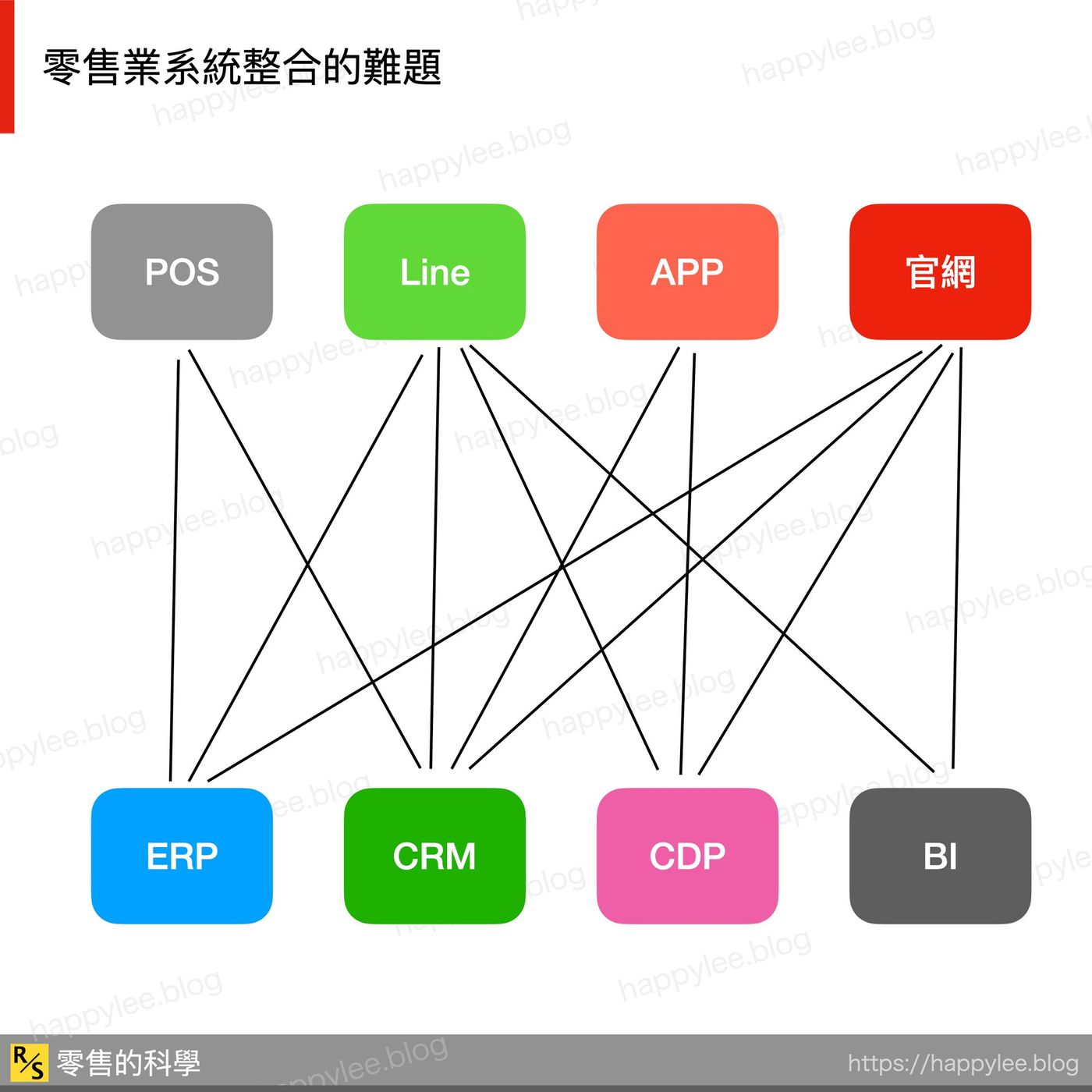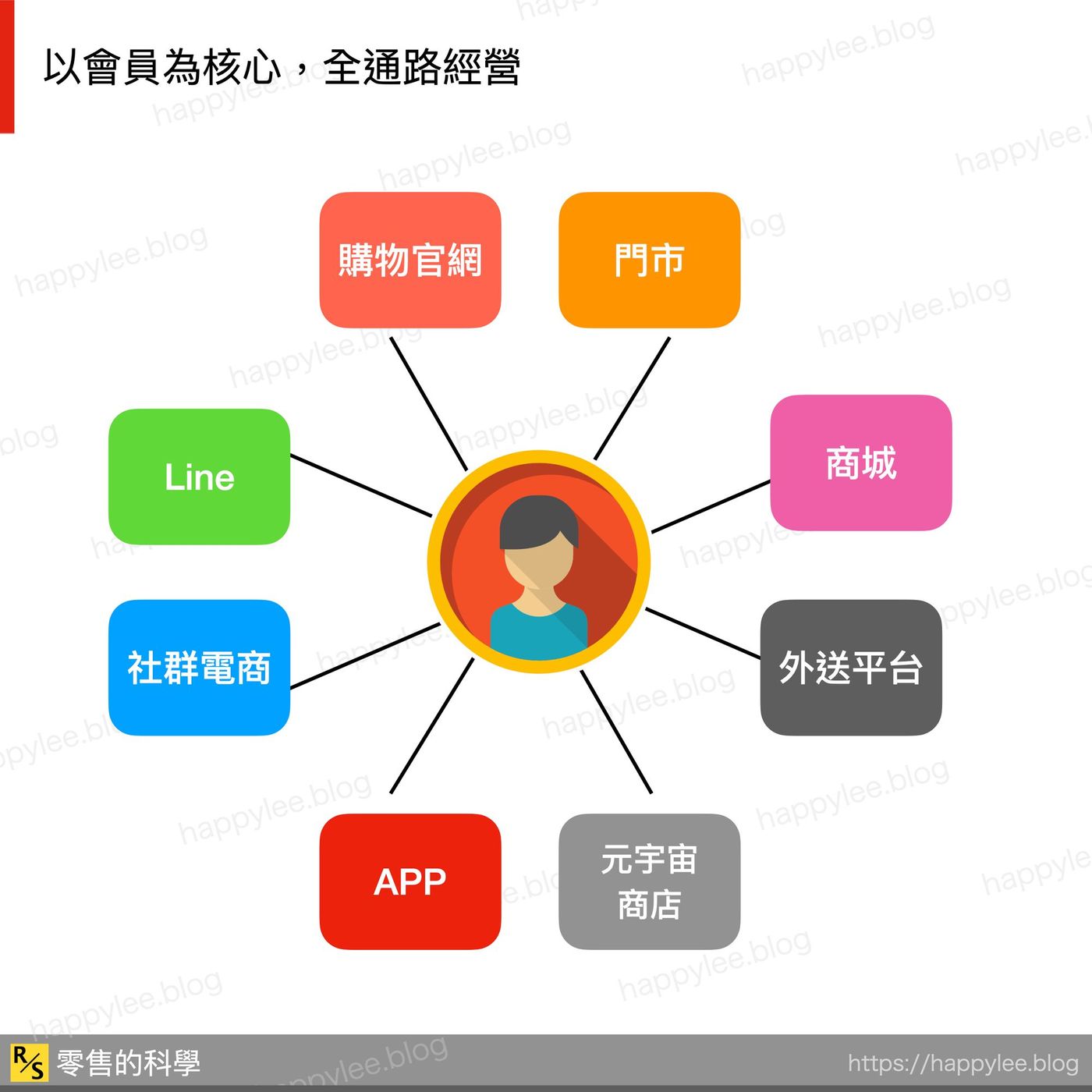
Hello,你好,我是91APP的產品長,因為一直在協助零售業做系統,所以寫了很多零售業相關的文章,希望能與大家多交流分享。
Headless e-commerce? From the "head" - Line, APP, to new channels: embrace change and return to the essence.
What is "headless e-commerce"? . This is a new system concept developed in response to more and more diverse trading scenarios.
In fact, "headless e-commerce", a more precise statement should be "API Based Digital Commerce", which is "API-based e-commerce system". (By Gartner Digital Commerce Report 2021 )
However, there is no head and no head, whether it is an API or not, usually retail bosses don't care, this is still a term in the software industry (or even a sales term) after all. As far as retail owners are concerned, they are still concerned about "finding more customers and driving more performance".
Where the flow of people is, the investment should be made, so the boss's concern is usually very practical: should I invest more in the management of Line's official account?

Should you use Line or an App?
When I visited customers recently, I often heard customers say that they are worried, what is the purpose of doing Line? Or do you want to make an app?
Because the logic of customer psychology is: if you want to make APP, of course you will find 91APP; but if you want to do Line, you may have to find other Line application service providers. The subtext is actually saying to us: "We are also evaluating a lot of your competition at the same time."
In Taiwan, Line’s market share is almost 100%. In order to reach consumers, brands must deploy Line as a medium at this stage. Therefore, we usually advise customers that Line must be laid out, and there is no reason not to do it.
But the key is the "OMO" and "Omni-channel" service. That is to say, for consumers, since it is the official Line account of the brand, if you join a member on Line, the store POS should also recognize me, right? If you can shop on the Line, should the inventory be synchronized? If I am already a member of the store, should Line also synchronize my membership rights?
The above problems are usually not solved by a "Line application service provider", but need to be integrated with the customer's existing systems: Line needs to be connected with POS manufacturers, Line needs to be connected with CRM manufacturers, and Line needs to be connected with ERP manufacturers. Concatenation, just thinking about it makes things very complicated.

Paths should be "integrated", not just "choice"
And this is exactly what 91APP is doing. We assist customers to connect various heterogeneous systems and integrate the data of all channels.
Many new customers who know us find it very strange. Isn't 91APP an app?
In fact, for a long time, we have made "not just APP", and APP is indeed our characteristic function. But now the core value of 91APP is to help customers solve the problem of "integration", whether it is the integration of members, the integration of systems, the integration of data, and finally the "integration" of OMO. (Extended reading: OMO - Nuclear Fusion in Retail )
The so-called "OMO", the key is never the two Os, but the "M" in the middle. Whether Shenma Online or Offline, without Merge, it's all clouds.
For more existing customers of 91APP, the products we provide are a kind of "retail middle platform". We assisted customers in importing the core products of 91APP, and integrated the integration lines of many existing systems of customers, data convergence, and membership integration to complete the OMO system integration. With these integrations, brands have a way to further turn OMO.
Therefore, 91APP will assist customers to connect POS and integrate online and offline members. 91APP will assist customers to connect ERP and connect online and offline goods. Even the existing CRM system of the customer is connected in series, and the existing point system and membership level are connected.
Therefore, in the same way, 91APP will also assist customers to connect to Line's official account, so that customers can integrate the members who have joined Line with the original membership system.
Therefore, if you understand the core value of 91APP, which is to assist customers in integration, then most of the Line service providers on the market are actually 91APP's partners , not 91APP's competitors.
Even various systems serving the retail industry, such as POS, ERP, CRM, CDP, etc., are all partners of 91APP. There are also many high-quality SaaS companies and software companies that have established partnerships with us. , through complete integration to serve customers together. ( 91APP Partner Zone )

The rapid expansion of the channel universe
So in the end to do Line? Or do you want to make an app? From the boss's point of view: "Children only make choices, I want them all!". In fact, this is not the boss' willfulness, but the trend of "all-channel" development in the retail industry, which is a matter of course and inevitable.
The so-called omnichannel is not just an official website, an APP or a store. For example, Line has gradually developed into a retail brand and a necessary channel in Taiwan. And overseas, it may be Whatsapp, WeChat, FB Messenger.
A while ago, live streaming was also an emerging trend. Some people asked internet celebrities to live broadcast, some bosses tried to do it themselves, and some asked store clerks to sell goods live during the epidemic.
Facebook can also open stores for sales, Youtube has also begun to test e-commerce in some countries, and even a little further in the future, in the "metaverse", there will definitely be retail. Metaverse will create a new channel pattern and a new sales experience. ( How do you "own" a tulip? - Talking about NFTs and the Metaverse )
But it's always impossible. A new set of technology will create a new set of members. As far as the same brand is concerned, the store originally has one set of members, online shopping has developed another set of members, Line has another set of members, APP has another set of members, and Metaverse? Don't think about it beforehand from other universes.
And one more set of channels means one more report for settlement performance, and one more set of inventory to match. Originally, it was quite busy for the noisy distribution in the light store. If there is more online shopping, there will be a set of inventory distribution. If there are more and more types of channels, should we allocate more warehouses to correspond to each channel?

The core operating system of the retail industry
The so-called "full" access is never "full". Technology is always developing, channels are changing, new channels are emerging, consumers are changing, and the universe of channels is always expanding.
But no matter how it changes, in terms of the essence of the retail industry, it is the same as "commodities", "transactions", "members", and "data". The nature of retail is unchanged. (Extended reading: The Four Essences of the Retail Industry )
That is to say, no matter how the brand channel develops, whether it is developing online shopping, developing Line, or even opening a store in the "Metaverse" in the future, the brand's membership service must provide a consistent membership experience.
Where the channel is, the members are there, and the brand will serve wherever it is. Every time a new channel is developed, members cannot be asked to "join again as a member".
No matter how the brand channel develops, it can also be flexibly called for the same set of inventory. All orders from all channels can be centralized for unified distribution, and all transaction figures can be correctly merged, and the transaction figures of all channels can be seen at a glance. All kinds of behavioral data in all channels should also be properly converged and concentrated to create a real data traffic pool for the brand.
These essential items of the retail industry: commodities, transactions, members, and data, need to have a set of "retail operating systems" as the core, and develop various "channels" (applications) on it.
With a stable and efficient operating system, you can try various paths on top of this operating system. Just like in a set of iOS and Android operating systems, developers can develop many, many interesting APPs, and you can download various APPs to test and find the most suitable APP for you.
With a stable and flexible operating system, no matter how the channel changes, you can master the essence yourself, and will not lose your advantage due to the rapid change of the channel.
With its own core "retail operating system", with the rapid evolution of technology, the test of "new channels" can be run in small steps, and the old ones can be replaced at any time, but the "operation core" can be operated steadily, and the whole company can Steady progress.
Therefore, whether it is "Retail Middle Office", "API Based Digital Commerce" or "Headless E-commerce", they are all possible solutions developed in response to the trend of the core operating system of the retail industry.

Make good use of the power of the industrial chain
Behind these solutions, they all represent the mature development of the software industry.
Taiwan's electronic hardware industry has been strong for decades. It is not just TSMC that is strong, but an entire industry chain. To create a terminal consumer product like a mobile phone, from chips, motherboards, components, screens to chassis, there is a complete industrial chain in Taiwan that can integrate all kinds of terminal products from upstream, middle and downstream.
The strength of an industry depends not only on a company, but also on the network benefits formed by an entire ecosystem and an entire industrial chain.
In the past when information technology was just developed, maybe a POS, a POS manufacturer, almost covered many information needs of a retail industry, including checkout, invoicing, membership, performance reports, and even store clerk management, etc. .
In today's rapid evolution of retail technology, there is no single software company or SaaS service provider that can meet all the needs of a retail brand at the same time. The industry chain of retail technology is gradually taking shape, "integration" is the trend, and "integration" is to create a competitive advantage.
The integration between different software products relies on "API". API is the key to the development of the industry chain. For a software company, API is also the key to allow itself to join the industry chain.
For retail brands, it is necessary to make good use of this increasingly rich industrial chain, develop their own unique channel services, create a unique brand personality, accumulate their own fans, and master their own members.
And we have been acting as an integrator to help brands make good use of this retail technology industry chain.

Full article: The Science of Retail By Happy Lee
Like my work?
Don't forget to support or like, so I know you are with me..

零售的科學

大家好,我是91APP的產品長Happy,因為一直在幫零售業做系統,所以把這十幾年來的經驗、產業觀察、與未來趨勢,慢慢記錄下來與大家做分享,希望對大家做生意有幫助,也很期待與大家透過這個地方交流分享。
Comment…